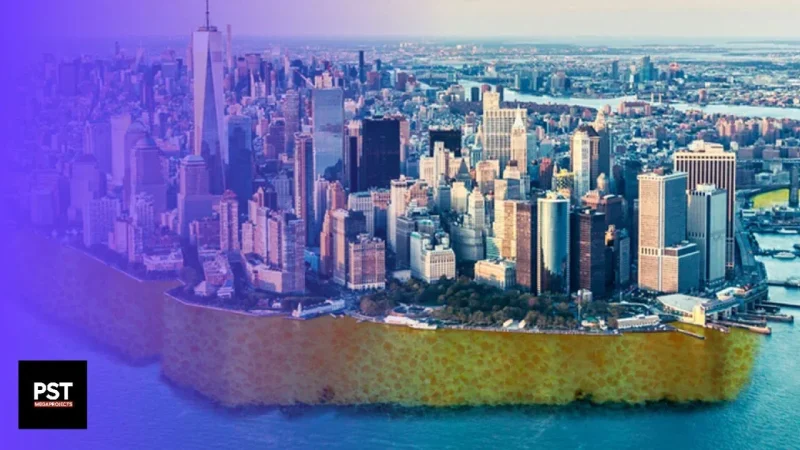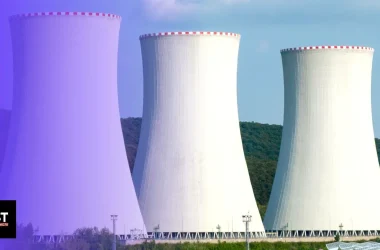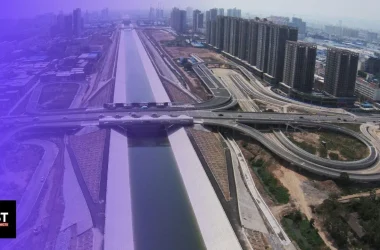China, a country grappling with the devastating effects of heavy rainfall and floods, decided to take strong action against them. With a staggering investment of $140 billion, the country embarked on an initiative with an unprecedented scale to create sponge cities.
Sponge cities are cities built with a focus on natural solutions harnessing the power of nature around us to combat flooding. Some of China’s sponge cities have proven their resilience, but despite the substantial investment, many places still face the grim reality of major floods. The question arises: are sponge cities a viable investment in the race against time and climate change?
What are sponge cities?
Sponge cities are pretty much, as the name implies, cities built to act like sponges to counter heavy rainfall and reduce flooding.
For China, turning its cities into sponge cities meant massive changes to land use, surfaces, underground infrastructure, and more. While the United States, Russia, and India have all attempted sponge cities, China’s program is on a whole nother level.
The initiative was launched back in 2015, and from 2016 to 2020, cities all over China engaged in more than 33,000 sponge-city projects, from residential communities to parks, spanning 90 cities in 13 provinces.
With 90 cities, China is the country with the most sponge cities in the world, which highlights its need for them and how disastrous its floods and rainfalls can really get.
Why does China need them?
In the past, China didn’t struggle with these problems when it was largely a rural country with a lot of green spaces and farmland that naturally absorbed the rainfall. However, China started opening up its economy to the rest of the world in 1978 and transformed itself into a major trading nation, which caused many Chinese people to abandon their farming jobs for jobs in manufacturing and trade.
This created a demand for urban cities, and the Chinese government had to build many cities on large areas of green spaces in order to house its growing urban population. But, replacing those areas with buildings and infrastructure, which didn’t absorb water in the same way, led to a major downside – flooding.
Floods are a huge problem for China. In fact, nearly 400 million people in the country are directly exposed to once-in-100-year floods, representing more than a third of the global exposure to floods.
Not only that, but China loses an estimated 1% of its GDP each year to floods, with more than 640 cities subject to flood risks and 67% of the population living in flood-prone areas, according to the World Bank.
Real-Life Sponge Cities
The Chinese government’s response to the problem is to convert affected areas into “sponge cities,” meaning that the cities were redesigned to cope with and process rainwater in a few different ways, including soaking it up, storing it, and releasing it when needed, just like a sponge.
This involved combining both gray and green infrastructures, so picture a blend of advanced drainage and water treatment systems alongside natural and semi-natural areas. To give you a better idea of what this means, let’s take a look at one of China’s leading sponge cities, Chongqing.
With a population of around 17 million and a critical location at the confluence of the Yangtze and Jialing rivers, Chongqing is one of China’s most largely exposed cities to floods. Therefore, the Chinese government built a wetland park in the Tongnan district in 2019, which helped the city quickly recover from its worst rainstorm in 100 years in 2020.
Built over 99 hectares, the park offers a lot of options to absorb excess rainwater, as it is home to various native plants, trees, ponds, and small islands. The park also includes elevated walkways that citizens can use to take a walk while surrounded by the beautiful scenery.
Additionally, the city was the first sponge city to be given a smart digital control system that lets authorities monitor its sewer and stormwater networks in real-time. With this, they can easily control how water flows into the natural environment, analyze how the whole system performs under extreme weather, and then use the data to prevent future floods.
This is a sponge city with mostly green infrastructure, but what about cities with gray infrastructure?
A good example is a city called Zhenjiang, near the banks of the Yangtze River. This city was equipped with a system of bioswales in its grounds, which are channels with sloped sides specially designed to gather stormwater inside it, filter it by removing debris and pollutants, and then send it to the ground beneath.
This allows the excess water to soak directly into the land instead of forcing it into drainage systems that can quickly become overwhelmed. Around 4,000 liters of water per square meter can be absorbed each hour.
Sponge City Failures
By now, you must think that these sponge cities are a great success story, but the truth is, many sponge cities in China are failing to do their jobs.
One of these cities is Zhengzhou, which was one of the most enthusiastic pioneers of sponge city construction, allocating nearly $8.45 billion to build more than 3,000 miles of new drainage and hundreds of acres of new green spaces.
But, none of this was enough to save it from a disastrous flood that took the lives of more than 300 people in 2021 and also cost the city’s economy $10 billion, which is a lot more than what it cost the city to become a sponge city.
In 2023, citizens of Chongqing also suffered from a fatal flood that displaced thousands and killed at least 15 people. These incidents caused outrage in China as victims asked why the sponge cities were struggling to soak up flooding despite billions in investment.
In response to the criticism, Chinese experts dismissed the concerns, saying that these floods were a once-in-a-century occasion and beyond any city’s bearing capacity. They also noted that the government did its best to reduce the losses. They also said that sponge city infrastructure can only handle no more than 200 millimeters of rain per day, and Zhengzhou saw rainfall in excess of 200 millimeters in just one hour.
Even though the Chinese government expected sponge cities to promote the quality of living and economic growth in China, they didn’t stop floods from causing direct economic losses of $4.5 billion in just the first three quarters of 2023.
Such losses raise the question: After many billions invested and nearly a decade of construction, does sponge city infrastructure really work to protect cities from flood damage?
The Future of Sponge Cities
While developing sponge cities is a reasonable approach to improve resilience against heavy rainfall, the fact that they can only manage a certain amount of rainwater makes them an impractical solution for the problem China is facing.
In other words, they aren’t a complete failure, but they also aren’t enough. This is because there’s an awful lot of uncertainty when it comes to climate change, and to solve this problem, the Chinese government must include measures that go beyond spending billions on construction, like effective forecasting and early-warning systems, into urban flood-protection efforts.
It might be a good idea to use new technologies like artificial intelligence and big data when planning those cities, which could help developers forecast natural disasters and detect early warning signs.
For example, a city can use advanced technologies to detect problem areas early and quickly concentrate development in them, or move quickly to relocate people and equipment to minimize damage when flooding is imminent.
Notably, other cities around the world are adopting sponge city concepts, like Hong Kong with the Taikoo Place, and Jakarta with Savyavasa. A redevelopment project at Taikoo Place is expanding green space to around 35% of its area, while the Jakarta project has a 45% greenery ratio.
Despite their limited abilities now, sponge cities can become a standard in the future as the climate crisis worsens, mainly because they are natural-based solutions.
China needs to work on developing the technologies it implements in the cities so they can be more resilient. This won’t be an easy process, since the country currently faces significant financial shortfalls for climate-resilient infrastructure, with an annual funding gap of nearly $70 billion over the next five years.
Building sponge cities is a growing movement around the world. But if we want to use it to combat the devastating impacts of the climate crisis, it needs to grow much faster and at a much bigger scale to really help reverse the extreme scale at which we have altered the natural water cycle.
Disclaimer
Please visit and read our disclaimer here.









